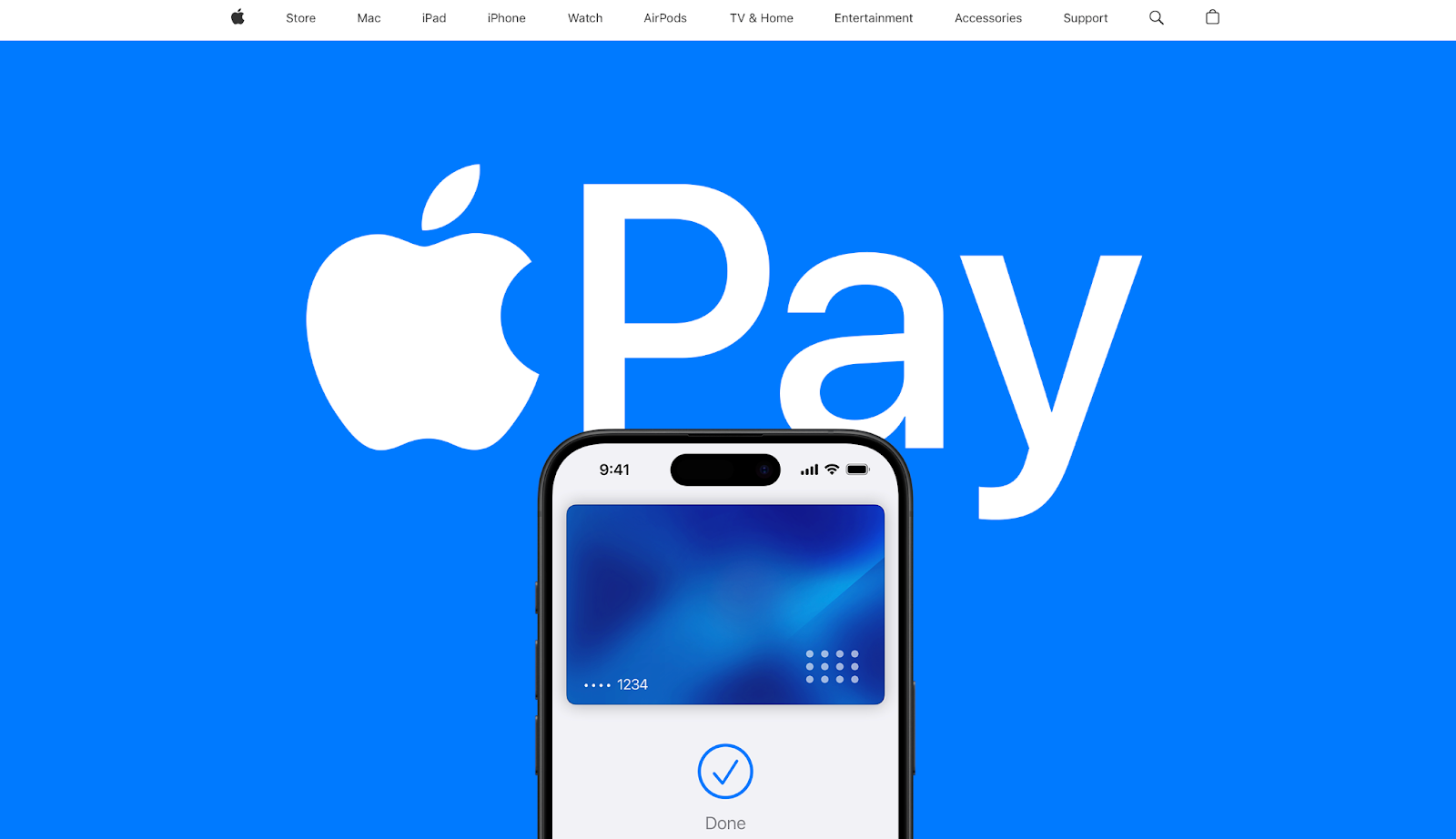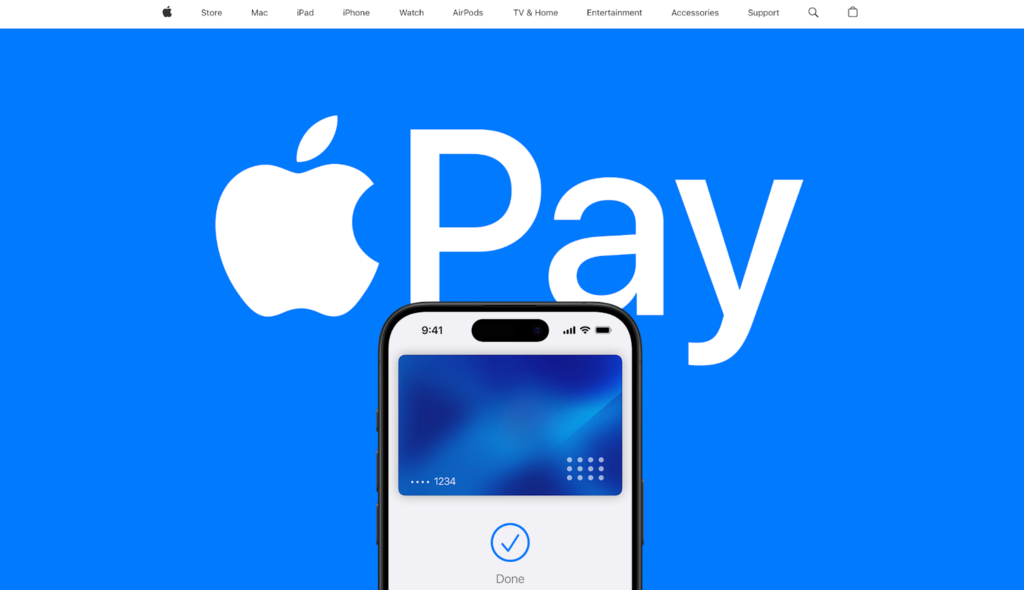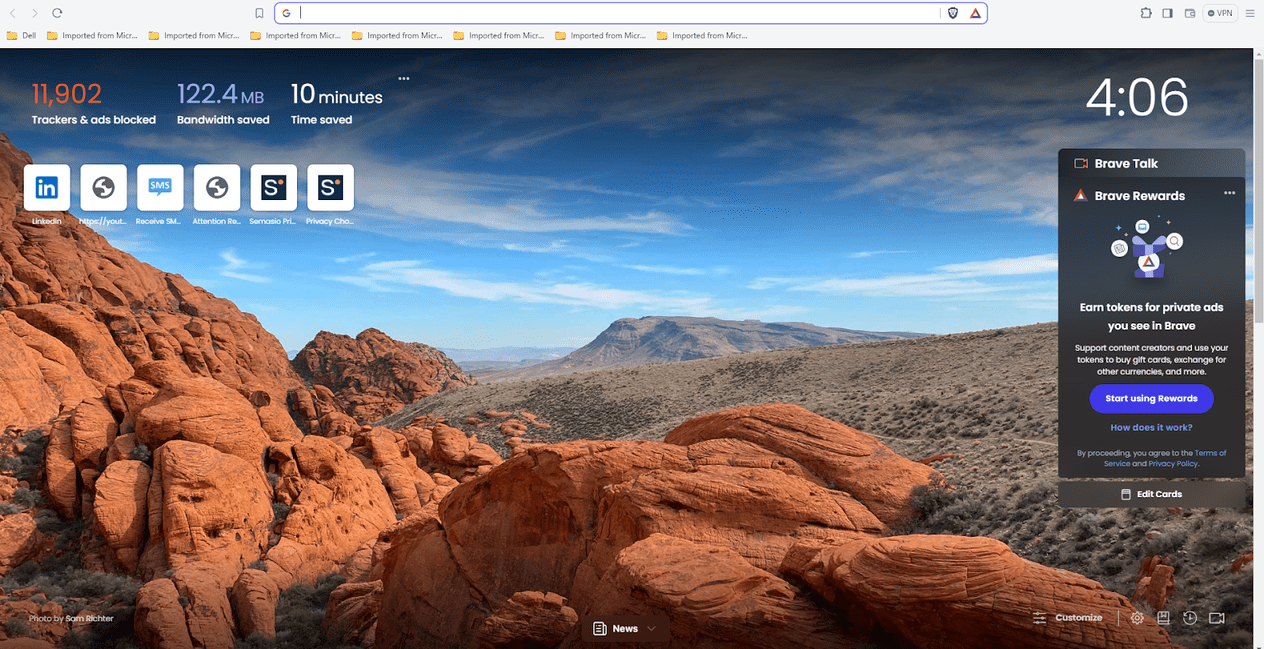Is Apple Pay Safe?
Laura Martisiute
Reading time: 5 minutes

Table of Contents
If you use or plan to use Apple Pay, you need to know: Is Apple Pay safe?
Below, we explain whether Apple Pay is:
- Safe to use.
- Good for privacy.
We also look at some steps you can take to improve both your safety and privacy when using this online service.
What Is Apple Pay?
Apple Pay is a digital wallet and mobile payment service provided by Apple Inc. that allows users to make payments with Apple devices. This service supports most of the company’s devices, including iPhone, iPad, Mac, and Apple Watch.

Users can make contactless payments at retail locations, within apps, and on websites. Apple Pay is designed to replace physical credit or debit cards, streamlining the payment process.
Apple Pay works with most major debit and credit cards from banks around the globe.
The service was introduced in 2014 and has been expanding globally, gaining support from a wide range of financial institutions and retailers. Apple Pay is often considered part of the broader trend toward digital and mobile payment systems, offering users an alternative to traditional payment methods with an emphasis on ease and security.
Is Apple Pay Safe?
Yes, Apple Pay is generally considered safe to use.
It has several security features designed to protect your information and transactions.
To secure card information, Apple Pay uses a method known as tokenization. This means your credit/debit card numbers aren’t stored on Apple servers or on your device. Instead, you get a unique, device-specific number. This number, known as the Device Account Number, is encrypted and stored in the Secure Element, a special security chip on your device.
Every purchase you make with Apple Pay also requires a passcode, Face ID, or Touch ID, so even if you lose your device, someone else can’t use it for payments.
If you believe your account has been potentially compromised, you can disable Apple Pay through the iCloud system.
In the past, security researchers issued reports claiming Apple Pay is potentially vulnerable to attacks.
Is Apple Pay Private?
Everybody has a different definition of privacy when it comes to services like Apple Pay.
Apple Pay has several features that aim to improve user privacy.
To protect your personal data and ensure merchants never see your actual card number, Apple Pay uses a device-specific number and a unique transaction code for each purchase.
If a cybercriminal breaches a payment terminal/database, they can only access this one-time dynamic security code rather than your credit card number, meaning they cannot make any more purchases.
Your credit/debit card numbers are not stored on your device or Apple servers. Apple also doesn’t keep any transaction information that could be linked back to you.
When introducing Apple Pay, Apple’s senior vice president of services said, “We are not in the business of collecting your data. Apple doesn’t know what you bought, where you bought it, or how much you paid. The transaction is between you, the merchant, and the bank.”
How about Apple’s privacy policy? Terms of Service; Didn’t Read (a project that rates privacy policies) gives it a “D” rating.
However, that’s for Apple’s main privacy policy. Apple also provides product-specific privacy information.
In “Apple Pay & Privacy,” Apple tells users what kind of information might be collected about them (including when and why). For example, Apple says it collects and stores information on how users use Apple Pay, but this information doesn’t identify users personally.
The product-specific policy also reiterates that the company does not store or monitor transactions users make with Apple Pay.
How to Improve Your Safety and Privacy on Apple Pay
Take the below steps to improve your safety and privacy when using Apple Pay.
- Use a strong device passcode. A passcode makes it more difficult for unauthorized users to access your Apple Pay information if your device is lost or stolen. Avoid passcodes like “1111,” and don’t reuse or share them with anyone else.
- Enable Face ID or Touch ID. Consider setting up biometric authentication for Apple Pay transactions to ensure that only you can authorize payments.
- Activate the “Find My iPhone” feature. This will allow you to put your device into lost mode if it’s ever stolen (or if you lose it), which will also automatically turn off Apple Pay.
- Disable Apple Pay remotely (if needed). If your device is lost or stolen, use Apple’s Find My iPhone service to put it in Lost Mode, which suspends Apple Pay, or erase your device completely, removing the possibility of unauthorized Apple Pay transactions.
- Use “Hide My Email.” This lets you generate a random email address so you don’t have to share your real one with merchants when buying something online. All emails are forwarded to your actual email address.
- Stay up to date with phishing scams. Be aware of phishing attempts and scams that might try to trick you into providing personal or financial information.
Our privacy advisors:
- Continuously find and remove your sensitive data online
- Stop companies from selling your data – all year long
- Have removed 35M+ records
of personal data from the web
Save 10% on any individual and
family privacy plan
with code: BLOG10
news?
Don’t have the time?
DeleteMe is our premium privacy service that removes you from more than 750 data brokers like Whitepages, Spokeo, BeenVerified, plus many more.
Save 10% on DeleteMe when you use the code BLOG10.
















